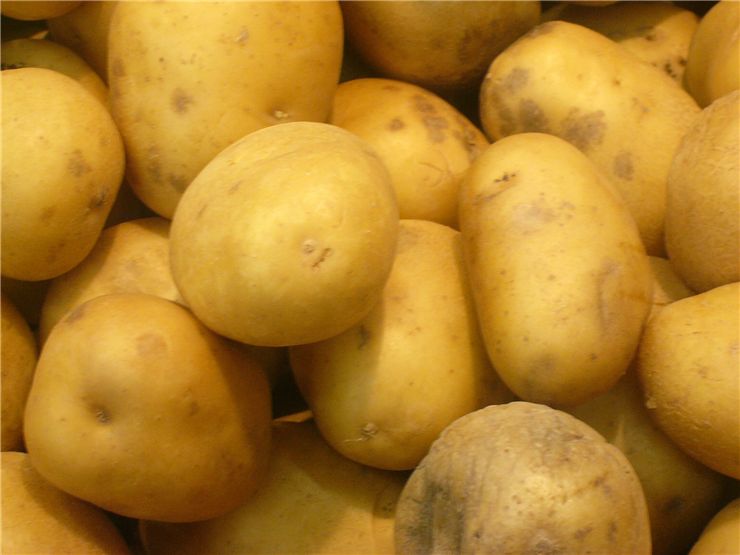Potato Facts - Interesting Facts about Potatoes
- Potato is consisted for 20% solids and 80% of water!
- The largest amount of potato created from one plant was 370 pounds! This was achieved in 1974 by Englishman Eric Jenkins.
- 100 grams of potato has 75 grams of water, 19 g of carbohydrates (15 grams of Starch and 2.2 grams of dietary fiber), 2 grams of protein, 0.1 gram of fat, and trace amounts of many vitamins (C, E, K, B6) and minerals and metals (magnesium, phosphorus, potassium, and more).
- Potato is the world’s fourth most produced staple – after wheat, corn and rice.
- Average American eats 138 pounds of potatoes each year. Of that number, half is fresh and half is industrially processed (chips, dehydrated potato, canned potato).
- Each day over billion people eat at least one potato.
- Potato was introduced to Europe by Gonzalo Jimenez de Quesada in 1550, and was popularized even more by Sir Walter Raleigh in 1585.
- Keeping potatoes in the dark for too much time can make them poisonous.
- Over the centuries, botanists have created many varieties of potatoes. Some of the best known are Sebago (common potato), Pontiac (very popular because of his thin red skin), Desiree, Pink Fir Apple, Kipfler, Pink Eye (or Tasmanian Pink Eye), Russet Burbank, Spunta and Nicola.

- Potatoes were first domesticated around 8 thousand years ago in South America. They were introduced into Europe via Spanish conquistadors.
- Potato was not easily accepted by European commoners. Its popularity started to grow only when the long wars and isolated economy of France forced its rulers to promote potato production to both commoners and nobility. King Louis XVI and his wife Marie Antoinette played very important role in the rise of potato during late 18th century.
- Sudden fungus disease in Ireland between 1845 and 1849 caused starvation of around one million people who relied on potato to keep them alive. During and after those hard times, over half a million Irishmen and women emigrated to North America and Australia.
- One of the most basic measurements of time for ancient civilization of Incas was the time it took to cook potato.
- The largest producer and exporter of potato in the world is China. In 2010 they produced 75.8 million tons.
- Potatoes are the second most consumed food in United States, behind milk.
- In 1778 one brief war was fought over potato. The opposing forces were Prissioa and Australia, both wanting to starve each other by stealing their food.
- First European nation which gladly accepted potato into their cuisine was Spain. They immediately introduced potato as invaluable military and navy ration that prevented formation of scurvy.
- In 1890s Alaskan Klondike gold rush, potato was valued very high because of its Vitamin C. In some cases potatoes were traded directly for gold.
- United Nation declared that 2008 was the year of the potato and tried to promote this plant as an excellent way of feeding hungry countries in Africa and Asia.
- Currently there are around 100 varieties of edible potatoes.
- One baked potato contains 21% of recommended daily dose of Vitamin B6. 40% of vitamin C, 20% of potassium and 12% of fiber.
- A man can survive on diet that consists only from potatoes and milk. Milk must be present because potato does not have large amounts of vitamin A and D.
- One medium sized potato contains 110 calories (one cup serving of rice has 225 and one cup of pasta 115).
- Potato has more Vitamin C than orange, more potassium than a banana and more fiber than apple.
- In 1995, potato was successfully grown in outer space onboard space shuttle Columbia.
- The world’s largest potato was produced by Pringle’s Company in Jackson, TN, in 1990. It was 23″ x 14.5″.
- Potato is grown in 50 states of USA, with the largest produces being Idaho and Washington.
- In Ireland average person eats 120 kg of potatoes per years. In Italy that number is only 30 kg.
- One of the first children toys ever to be advertised on US TV was “Mr. Potatohead” in 1952.
